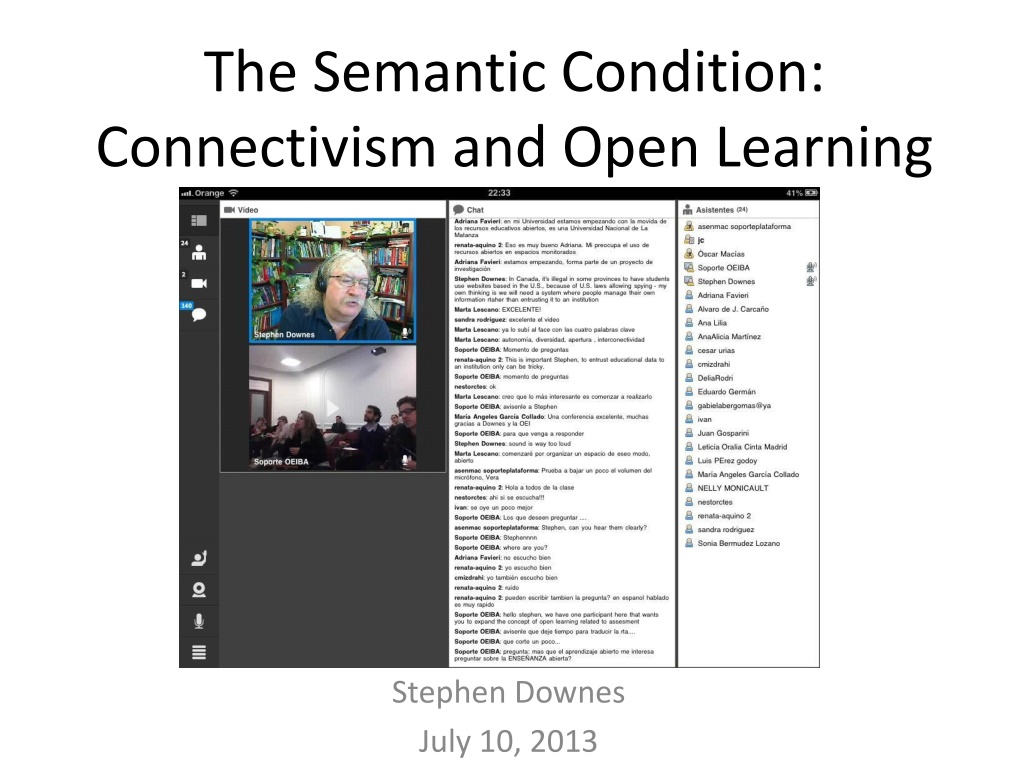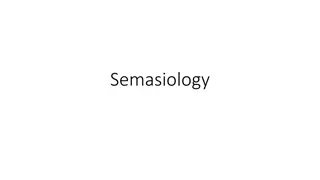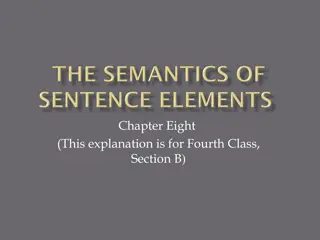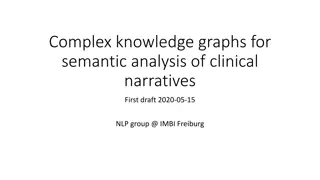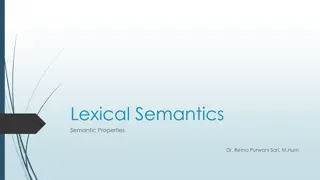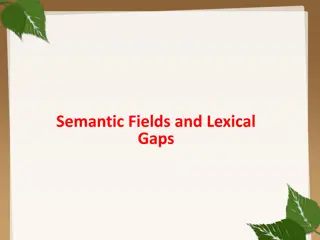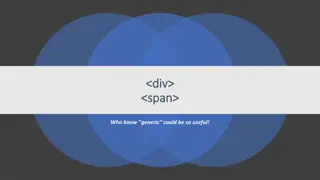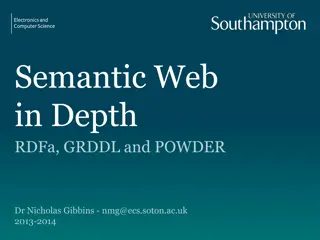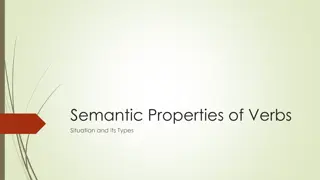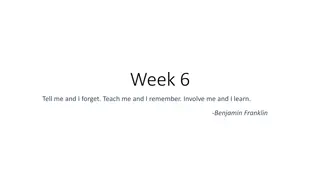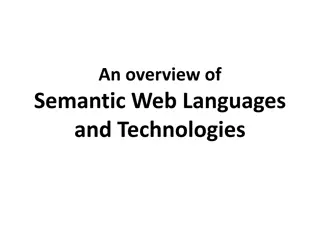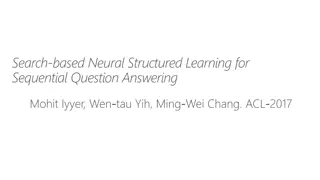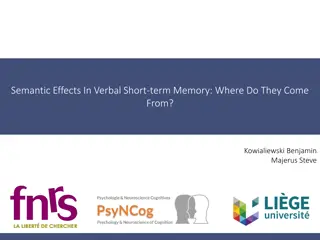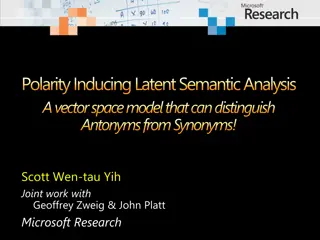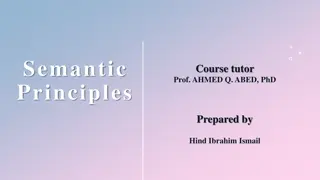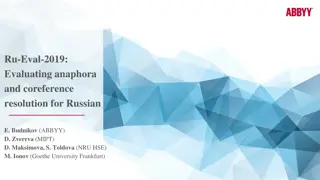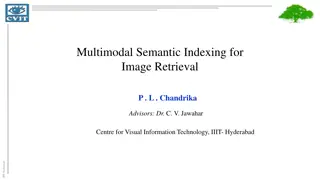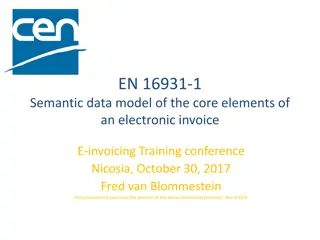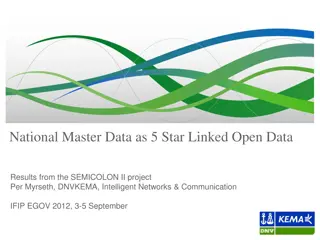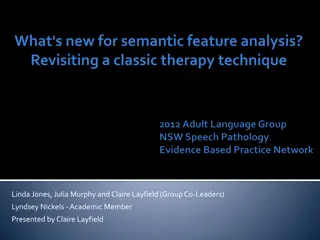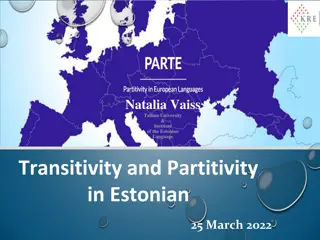The Semantic Condition: Connectivism and Open Learning
Explore the concept of connectivism and open learning as discussed by Stephen Downes in this insightful piece. Delve into the interconnected nature of knowledge in a digital age and its impact on education and learning paradigms.
Download Presentation

Please find below an Image/Link to download the presentation.
The content on the website is provided AS IS for your information and personal use only. It may not be sold, licensed, or shared on other websites without obtaining consent from the author. Download presentation by click this link. If you encounter any issues during the download, it is possible that the publisher has removed the file from their server.
E N D
Presentation Transcript
The Semantic Condition: Connectivism and Open Learning Stephen Downes July 10, 2013
The principles of connectivism - autonomy, diversity, openness and connectedness in practice. Our findings suggest that these might all be achievable in a complex learning network, but in a course (as opposed to a network), particularly a massive open online course, they can be compromised. Jenny Mackness, Sui Fai John Mak, Roy Williams http://eprints.port.ac.uk/5605/1/The_Ideals_and_Realilty_of_Participating_in_a_MOOC.pdf
Factors affecting mental states Empirical, cognitive, psychological http://halfanhour.blogspot.com/2010/11/model-of-autonomy.html
Capacity to act on mental states Physical, social, structural, resources
Scope and range of autonomous behaviour Expression, association, selection, method
Effects of autonomous behaviour Impact, improvement
From the study Autonomy was equated to flexibility and control over learning and exemplified by the participants choices of how, and how much, to engage with the course. Thanks to the learner autonomy I thought would be provided in the course, I started following the course. If it would have been a more rigid structure, I would not have done so (due to time/work schedule reasons). We had a lot of autonomy because we could basically do what we wanted; participate fully for credit, fully for no credit or on the varying scale of partial participation .
However learners new to the environment and concepts lacked confidence and preferred structure, guidance and even intervention to autonomy. Autonomy was less important when I needed full instructions I felt like some guidance would have helped. Freedom is great, but this course was all over the place. There was no one place to follow the latest thinking on any one subject.
It was also found that autonomy was equated with lack of assessment and that learner autonomy can be difficult for the course instructors. I loved the freedom to work outside assessment guidelines choose what I wanted to focus on. Learner control is not without frustration for the instructor. I recall feeling a bit frustrated that the concept of connectivism that I was trying to communicate - the neural, conceptual, and social/external dimensions of networked learning was not resonating with participants.
Discussion of Autonomy not all CCK08 participants wanted the level of autonomy offered the expertise divide it does require learners to embrace independent learning. autonomy is, paradoxically, jeopardised in the absence of constraints An agent's authority over her actions is no guarantee that she has the power to determine how she exercises this authority . (Buss, 2008)
Composition Many types of entities http://lemire.me/fr/abstracts/DIVERSITY2008.html http://www.huffingtonpost.com/stephen-downes/democratizing-education_b_794925.html
Intention Different goals, desires (Mill)
Perspective Uniqueness of point of view, language
Mathematics of diversity Multiple inputs produce mesh networks
Putnam, Florida, and the rest of it Homophily and associationism http://www.downes.ca/post/53544 http://profesorbaker.wordpress.com/2011/01/30/homophily-and-heterophily- what-fires-together-wires-together-cck11/
Teaching what we have in common instead of our differences? No http://secondlanguagewriting.com/exploration s/Archives/2007/August/TheDownsideofDivers ity.html
From the Study Diversity was ensured by the large numbers enrolled on CCK08 from all over the world. Different nationalities, cultures, ages and backgrounds were very much in evidence on the course. Diversity was also reflected in the learning preferences, individual needs and choices expressed by interview respondents.
little support for the hugely diverse group of participants, some of whom did not necessarily have all the skills or disposition needed to learn successfully, or to become autonomous learners CCK08 was designed on the principles of an open network, with minimum instructor intervention. The complex diversity and minimal moderation were difficult to reconcile in a MOOC diversity needs to be managed, which paradoxically, adds another layer of constraint on autonomy.
Open education Open content, teaching, assessment Stages of openness and terminal path http://www.flickr.com/photos/ross/2916958593/ http://www.downes.ca/presentation/271
Open networks Clustering instead of grouping
Flow Input, output, feedback plasticity
CCK08 was an open course: there were no entry requirements and it was free to any interested non-credit participant. Credit participants paid a fee. Numbers were not limited.
assumption in the course was that participants would be willing or ready to give and receive information, knowledge, opinions and ideas; in other words to share freely. Openness within the Open Source (OS) community is usually interpreted similarly: i.e. free , as in beer; free as in liberty, or speech; and there is an additional sense of free as in transparent, and therefore shared.
In CCK08 active participation and interaction was only sustained by a small percentage (14%) of the total number of participants. The remaining 86% had probably either dropped out of the course or were lurking . There are at least two possible explanations: i) they were getting a free ride (free as in beer ), or ii) they were demonstrating novice behaviour; many novices lurk until they feel confident enough to expose their views in public forums. The differences in the responses of interview respondents suggested that there was no common understanding of openness as a characteristic of connectivism.
Open Educational Resources OERs enable people to pursue their own personal interests in their own way But, more importantly, OERs become the medium of communication We need to view OERs, not as resources created by publishers at great cost, but as created by learners to interact with each other The role of professionals and publishers becomes the production of seed OERs
Influence vs emergence Thought-bubbles we perceive wholes where there are only holes http://www.downes.ca/post/55001 http://connect.downes.ca/post/44222
Scope vs Level http://www.downes.ca/post/42066
Ontology of emergence Ontological (real) vs perceptual (recognized)
As commented by one of the instructors, My main goal was to connect with other learners . The other instructor puts it slightly differently: I don't consider either 'making connections' or 'theoretical conceptual framework' to be the essence of connectivism. As I have stated many times, knowledge is pattern recognition; learning is becoming able to recognize patterns. (CI) In other words, connectivity is not an end, but a means: this shifts the gist of learning theory away from connectivity per se to pattern recognition.
Wide range of possible connections. As one participant noted, I connected through e-mail .. a few times back and forth (that was very good) I connected to the course learners by texting on these live and audio/text streams. I responded to blogs at least twenty posts in different CCK08 blogs from other students. I responded to many of the introductions in the Forum ..These nodes of connectivism were meaningful places for me, even if temporary connections only. (NCP)
Whilst connectedness was afforded by technology, it did not necessarily ensure interaction. As Siemens (2009c) says, The question for me is not how are people connected? but rather what are the implications of people being connected in a certain way? Frequency of contact isn t that important to me . There were some significant barriers to interaction and connectedness: Interaction was key to the experience for me [I] would like to add that the two barriers to participation on the forums IMHO were X s appalling behaviour and XX s patronising and teachery posts and actions .. (who knows how many timid people or those whose first language is not English we lost). (NCP)
Other barriers to connectedness and interactivity: were the quality of personal connections ( I was fed up with tittle tattle, bad behaviour, trolling so did not need the connection socially ) levels of expertise. The expertise divide is critical in all online learning and can effectively undermine openness, connectedness and interactivity, e.g. The reason I stopped is because I cannot understand the issues being discussed anymore
The more open the course, the more this becomes a dilemma for the course designers. These quotes reveal that the dynamics of connectivism are perceived as both enablers and inhibitors for learning in a massive open online course designed on the basis of these principles alone.
Stephen Downes http://www.downes.ca
